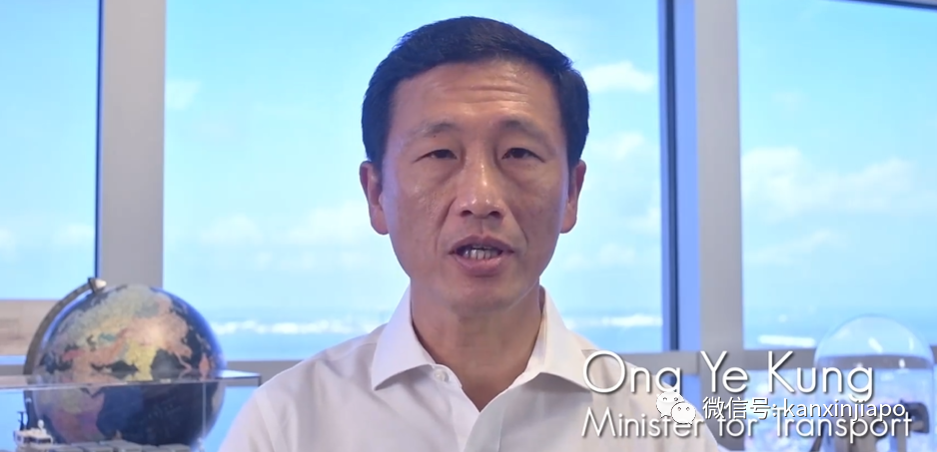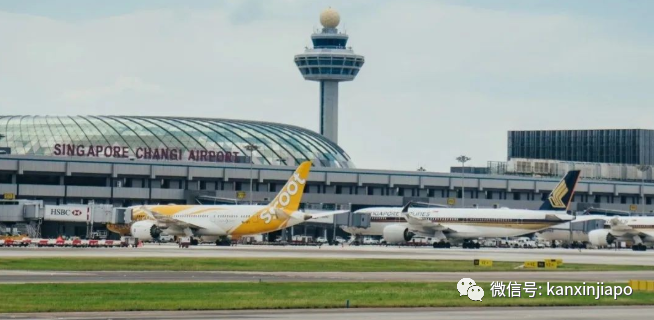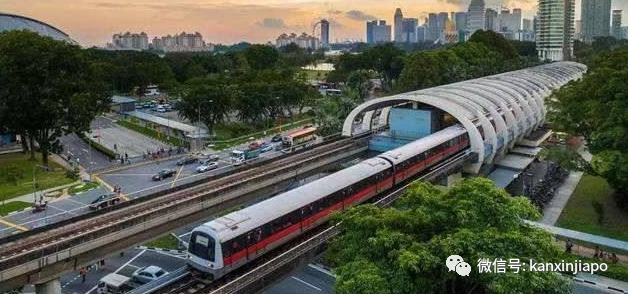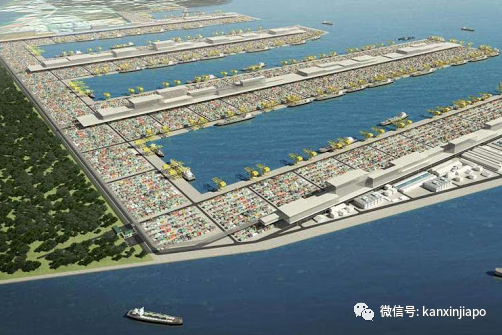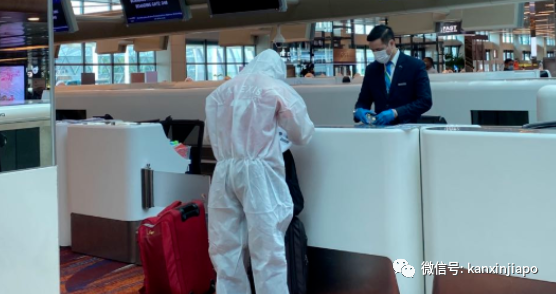|關注“新加坡眼”,輸入“下載”即可安裝新加坡眼App|
8月15日,新加坡新增確診81例,累計55661例。新增病例當中,含境外輸入16起、社區病例3起。衛生部將在今晚公布其他詳情。
境外輸入病例中10人來自一艘于8月8日抵達新加坡的船只。
昨天(8月14日)新加坡新任交通部長王乙康發表演講,他透露新加坡考慮單方面向一些已控制好疫情的國家或區域的乘客開放,互惠綠色通道有望擴大到一般旅行。
屆時,一般旅行乘客入境時會進行更加嚴格的冠病測試,不必強制隔離14天。
除此之外,新加坡也將放寬對這些國家和區域接待轉機和過境航班限制。
王乙康表示,目前,病毒傳播風險與新加坡相似或更低的國家和地區,其乘客人數約占疫情前乘客總量的40%,此舉有望恢複經濟。
健康和經濟方面的考慮並不矛盾,新加坡將找到振興航空樞紐並確保新加坡安全的方法。
王乙康強調交通是新加坡的命脈,爲了生存,新加坡必須保持邊界開放,爲了繁榮,新加坡必須成爲全球交通樞紐。目前,因爲冠病疫情,新加坡機場運營狀況“倒退了至少40年”。
“過去新加坡的機場每天記錄有超過1000架次起降,現在大約是150架次。就國際旅客流量而言,樟宜機場曾是世界上第七繁忙的機場,但現在已降到第50位。更糟糕的是,我們沒有國內航空旅行可以依靠。”
盡管運輸貨物的飛機仍在使用樟宜機場,但僅占疫情之前總航班量的5%。新加坡目前已開始爲過境者服務,然而即便是高峰期,客流量也最多占過去總客流量的三分之一。
新加坡的航空業客流量回到了1981年第一個航站樓首次運營的狀態。在1980年代初期,許多航空公司尚未決定常駐樟宜機場。新加坡人全力以赴吸引他們前來,包括單方面開放航空權。
王乙康表示,今天,許多航空公司已常駐在此,樟宜機場已發展成爲世界級機場。新加坡的挑戰是在控制病毒傳播的同時,恢複乘客數量。今昔情況雖有不同,但需要的正是1980年代初期的那種積極進取的精神。
除此之外,王乙康還就疫情下,新加坡交通業如何應對挑戰發表了觀點。以下是演講全文(非官方翻譯):
維持新加坡前進的真相
一個新的世界秩序正在重塑新加坡的全球聯系。
中美之間的技術和經濟競爭可能會使全球供應鏈分裂,並改變全球貿易和運輸方式。
北極冰蓋的融化可以改變航運路線。世界日益增強的環境意識,促使我們所有人必須在國內和國際上使用更清潔的能源。
目前最大的破壞和挑戰是新冠病毒,它使我們受到挫折,使飛機停飛,將我們限制在家中,並迫使我們進入“虛擬生活”,去進行線上學習,遠程辦公和電子商務。
但是有些事情保持不變,例如我們的地理位置。早在13世紀,新加坡島就已成爲繁華的區域港口。我們利用季候風,連接著印度,東南亞和中國市場。
英國人于1819年到達新加坡,將其建立爲定居點,並將我們設爲自由港。我們與歐洲建立了聯系,也許這就是全球化1.0。
新加坡1965年獨立後,世界秩序已改爲美國主導,我們重新立足,進行了工業化,吸引跨國公司到新加坡,並成爲許多商業活動的全球樞紐。
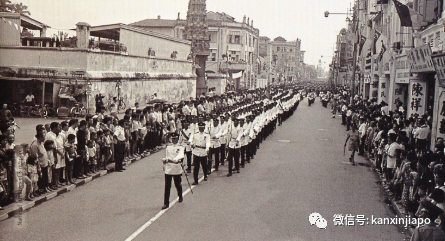
新加坡的這種延續性的一大因素是馬六甲海峽。它在全球貿易有重要作用。即使在今天,每年通過馬六甲海峽的全球貿易量高達三分之一。
然而,僅靠天然的地理優勢是不夠的。我們起步之後,靠的不是大自然“賞飯”,而是用雙手努力創造。我們抓住海上機遇,建立了航空、金融、信息通訊、會展、教育、研發樞紐。經過幾代新加坡人的努力,才有今天。
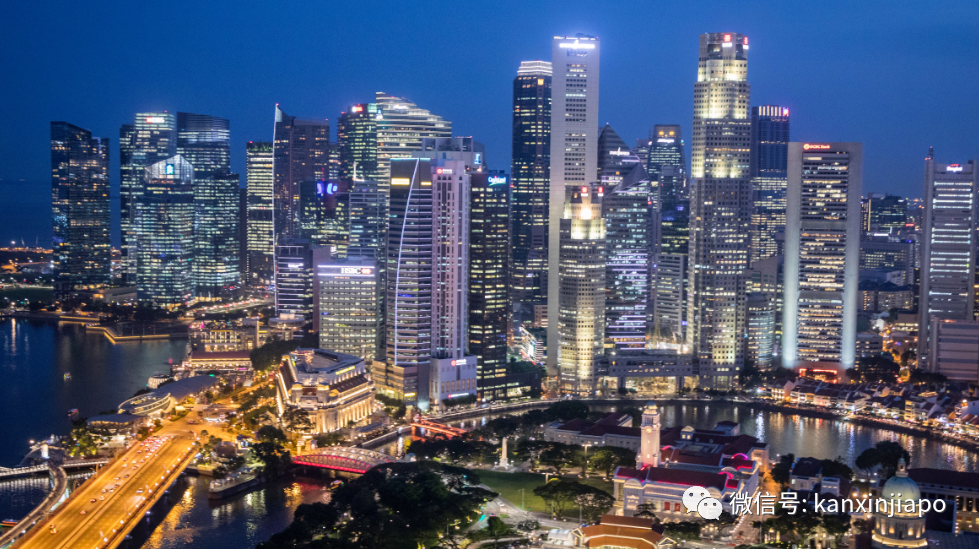
在風雲變幻之際,認識這些不變的因素,才能讓我們在面對不同的未來之時,保住核心與重心。
一種更環保的交通方式
讓我從我們所有人都珍視的陸路運輸開始說起。
地鐵在過去幾年中大大提高了可靠性,我深表感謝。該系統過去每行駛13萬公裏,就會出現超過5分鍾的故障。現在,故障率降低至100萬公裏。
上周我訪問SMRT倉庫時,SMRT首席執行官梁建鴻告訴我,現在70%的維護工作是預防性維護,而30%則用于糾正性維護。幾年前,這個比率幾乎是反過來的。
這明確表明陸路交通服務的好轉。對此工程師們功不可沒。不過,這不是勝利的宣告,而是警鍾。我們今天擁有的良好服務來之不易。我們必須繼續把維護和工程放在第一位。
在接下來十年,我們幾乎每年都會開設新的車站和線路,建設湯申-東海岸線、開通裕廊區域線和跨島線。捷運網絡將從今天的約230公裏增長到未來的360公裏。
政府爲陸路運輸投入了大量資源。今天的捷運地圖與許多歐洲先進城市一樣緊密和全面。捷運線路的建造成本昂貴,政府無法通過票價來收回基礎設施成本。
維護和運行系統以及更新老化的運營資産(特別是對于捷運系統而言)花費很多。票價收入不足以支付這些運營費用。政府每年已花費20億新幣補貼公共交通系統的運行。
但是,有吸引力的公共交通系統帶來了更綠色、更公平和更好的新加坡,並幫助我們減少使用汽車。交通是新加坡綠色發展的一部分。交通部將與其他部門緊密合作,爲新加坡制定全面的可持續發展計劃。
世界貿易的交叉點
現在讓我談談海洋和天空——海島的生命線。
新加坡的投資者希望保證零部件、制成品、其關鍵人物、客戶、合作夥伴和供應商可以自由進出新加坡。遷移、貨物和資金的自由賦予我們明顯的競爭優勢。
我們的海港和機場是我們的兩個肺葉——吸收氧氣並使人體所有其他部位充滿活力。我們經濟的每個部門都依賴我們的海港和機場。讓我從冠病時期情況比較好的一個肺葉——海港說起。
70年代上小學時,我了解到新加坡是貨運量僅次于鹿特丹的世界第二大港口。
今天,鹿特丹已跌至第11位。現在第一名是上海。但這些年來,新加坡仍然排名第二。那這是怎麽發生的?
因爲鹿特丹和上海是關口港,這意味著它們管理著進出歐洲或中國這樣大腹地的貨物運輸。因此,隨著國家和大陸經濟實力的變化,其貨物運輸量大小也會發生變化。
但是新加坡是轉運港口。我們是世界的交換點,貨物到達並重新連接到其他運輸線。
因此,今天,一艘抵達新加坡的大型拖船通常會將其集裝箱轉移到另外100艘船上。然後從另外200艘船上取走集裝箱。因此,每條在新加坡停靠的主拖運船代表100 x 200 = 20,000個連接。這就是海上貿易。
從數量上看,新加坡是世界上最大的轉運港。這又是由于馬六甲海峽和新加坡海峽的重要性,與我上小學的那一天相比並沒有減少。
我們建立在充滿活力的港口上,並在航運、船舶金融、海洋保險、海事法律、海事物流等領域産生了許多其他互補性産業。
我們的港口受到疫情影響,新加坡港務集團預計今年的運量將下降。但是新加坡港務集團會做出靈活的反應,以抓住電子商務等領域的新機遇,並投資于其競爭優勢。
新加坡港務集團正在開發下一代大士港,並在那鞏固其業務。它計劃到2040年代處理多達6500萬標准箱的容量。爲新加坡的樞紐地位增添彈性。
恢複我們的航空樞紐
與海港不同,我們的另一個肺葉——機場,幾乎完全喪失了工作能力。嚴格的邊境措施以及對健康的考量,使國際航空旅行幾乎降爲零。
過去我們記錄每天有超過1000架次起降,現在大約是150架。就國際旅客流量而言,我們是世界上第七繁忙的機場,但現在已降到第50位。更糟糕的是,我們沒有國內航空旅行可以依靠。

我們試圖以各種方式帶回需求。貨機仍在使用樟宜機場,但僅占疫情之前總航班的5%。
新加坡已經開始爲過境者提供服務,但是即使在高峰期,客流量最多僅占樟宜過去旅客總流量的三分之一。如今,與我們之前每年將近2000萬客運量相比,疫情後機場每天服務400人次。
正如樟宜機場的同事告訴我的那樣,冠病讓我們倒退了至少40年,回到了1981年第一航站樓首次開放的狀況。但是那時和現在對比有一個大差異。
在1980年代初期,許多航空公司尚未決定常駐樟宜機場。我們全力以赴吸引他們前來,包括單方面開放航空權。
今天,許多航空公司已常駐在此,樟宜機場已發展成爲世界級機場。我們的挑戰是在控制病毒傳播的同時,恢複乘客數量。今昔情況雖有不同,但我們需要的正是1980年代初期的那種積極進取的精神。但是客流不能隨意打開和關閉。我們需要同時采取明智的措施,與每個國家的風險狀況相稱,並隨著我們變得更加自信而逐步采取步驟。
例如,我們可以考慮單方面向某些已控制該病毒的國家或地區的旅客開放。我們可以爲商務旅行增設互惠綠色通道,也可以將其範圍擴展爲一般旅行。強制14天的隔離對旅行者來說是一個主要的阻礙因素,我們可能不得不考慮采用嚴格的測試來代替隔離。
健康和經濟方面的考慮並非矛盾,我們將找到振興航空樞紐並確保新加坡安全的方法。
結論
在交通部任職的第二天,我參觀了樟宜機場。管理層在2號候機樓接待我。由于新冠而關閉,美麗的綠植全部枯萎了。
我問樟宜機場集團首席執行官這是爲什麽。他說,航站樓已經關閉,他們不得不節省成本,包括維護成本。他補充說:“但是,種植的九重葛很耐寒,它們會活下來的。”
我做了園丁朋友教我的事情,用指甲擦了一棵枯萎植物的樹皮。確實,在幹燥的棕色樹皮下面是鮮綠色的莖。如果植物有心髒,它仍然在跳動吸水。
關于新加坡的命運,以下真理成立:爲了生存,我們必須保持邊界開放。要蓬勃發展,我們必須與世界建立聯系。爲了繁榮,我們必須成爲全球經濟的樞紐。
因此,交通部的使命——建立物理聯系,將新加坡人聚集在一起,將世界帶到新加坡,將新加坡帶到世界。
疫情降低了航空旅行,使我們的一個肺葉喪失了功能,但是新加坡的心髒——我們的決心、活力和努力精神仍然強勁。樟宜機場將有一天再次充滿客流,新航飛機航班數量將再次飙升。這是我們在未來數月和數年內的集體使命,因爲我們再次等待九重葛的開花。
祝第55屆國慶快樂!
英文原文如下:
Truths to Keep Singapore Moving
A new world order is now reshaping Singapore’s global connections.
Technological and economic rivalry between China and US may bifurcate global supply chains and alter global trade and shipping patterns.
The melting of the Arctic ice sheets could reshape maritime routes. Heightened environmental consciousness must push us all to use cleaner energy, domestically and internationally.
But the biggest disruption is COVID-19, which has hamstrung and crippled us. It has grounded planes, confined us to our homes, and forced us into a virtual life – eLearning, telecommuting and e-commerce.
But some things remain unchanged, such as our geography. As early as the 13th Century, the island of Singapore has been a bustling regional port. We rode the monsoons to connect the markets of India, Southeast Asia and China.
The British arrived in Singapore in 1819, established it as a settlement and turned us into a free port. We connected with Europe – that was perhaps Globalisation 1.0.
Post-independence in 1965, we found our footing in a US-led world order. We industralised, attracted MNCs to Singapore, and became a global hub for many business activities.
The reason for this continuity is the importance of the Straits of Malacca to global trade. Even today, up to a third of global trade passes through the Straits.
But geographical endowment is not enough, because the road we travelled since then is not made by Nature but carved by hand. We seized maritime opportunities to establish hubs in aviation, finance, infocomms, MICE, education, research and development. A few generations of Singaporeans worked hard to bring them here.
It is important to recognise these constants in the midst of change. They offer us a centre of gravity as we adapt to a different future.
A Greener Way to Move
Let me start with land transport, which all of us hold dear.
I am deeply thankful to MOT, LTA, SMRT and SBS Transit for the vast improvement in train service reliability over the past few years. The system used to suffer a breakdown longer than five minutes for every 130,000 train-km travelled. Now it is clocking over a million train-km between such breakdowns.
When I visited the SMRT Tuas Depot in the wee hours of Hari Raya Haji last week, SMRT CEO Neo Kian Hong told me that 70% of maintenance effort is now devoted to preventive maintenance, and 30% to corrective maintenance. A few years ago, the ratio was almost flipped the other way around.
This is a clear sign that we have turned the corner. As they have done so many times in Singapore, engineers here have saved the day. Still, this is not a declaration of victory, but a cautionary bell. What we have today is hard won. We must continue to place maintenance and engineering as a top priority.
Over the next decade or so, we will open new stations and lines almost every year – starting with the remaining stages of Thomson-East Coast Line, to completing Circle Line, and opening Jurong Region Line and then Cross Island Line. The MRT network will grow from around 230km today to 360km by then.
We are also expanding the cycling network, improving first and last mile connections. The bus network will complement the train network.
We are devoting a lot of resources to land transport. The MRT map today is as tight and as comprehensive as many advanced European cities. MRT lines are expensive to build, and the Government does not recover the infrastructure costs through fares.
It also costs a lot to maintain and operate the system, and renew ageing operating assets, especially for the MRT system. Fare revenue is insufficient to cover these operational expenses. Government has been spending $2 billion every year to subsidise the running of the public transport system.
But an attractive public transport system brings about a greener, fairer and better Singapore, and help us move towards a car-lite nation. Transport is one part of the greener development of Singapore. MOT will be working closely with MND and the new MSE, to develop a comprehensive sustainable development plan for Singapore.
Intersection of World Trade
Let me now turn outwards, to sea and air – lifeblood to an islandnation.
Investors in Singapore want the assurance that components, finished products, their key people, customers, partners and suppliers, can come in and out of Singapore freely. This freedom of movement, goods, and capital give us a significant competitive edge.
Our seaport and airport are our two lungs – taking in oxygen and vitalising all other parts of the body. Every sector of our economy relies on our seaport and airport. Let me start with the one lung that is doing relatively well despite COVID-19 – our seaport.
When I was in primary school – in the 1970s – I learnt that Singapore was the second largest port in the world by cargo volume, after Rotterdam.
Today Rotterdam has dropped to number 11. Number one is now Shanghai. But Singapore remains at number two after all these years. How did that happen?
It is because Rotterdam and Shanghai are gateway ports, meaning that they manage the transport of cargo in and out of large hinterlands like Europe or China. So as the economic weight of countries and continents changes, the sizes of the gateway ports change.
But Singapore is a transshipment port. We are an interchange of theworld, where cargo arrives and reconnects to other shipping lines.
So today, one main haul ship that arrives at Singapore will typically transfer its containers to 100 other ships. It then takes on containers from another 200 ships. So, each main haul ship calling at Singapore represents 100 x 200 = 20,000 connections. This is what it means to be an interchange of the sea.
As a transshipment port, Singapore has been the biggest in the world, by volume. That is in turn due to the importance of the Straits of Malacca and Singapore, which has not diminished from the time I was in primary school.
We built on our dynamic port and generated many other complementary industries, in shipping, ship finance, marine insurance, maritime legal, maritime logistics.
Our port has been affected by COVID-19, and PSA is anticipating a drop in volumes this year. But PSA will respond nimbly, to capture new opportunities in areas such as e-commerce, and investing in its competitive advantage.
PSA is developing the Next-Generation Tuas Port and consolidating its operations there. By the 2040s, it plans to handle capacity of up to 65 million TEUs. PSA is also not just the Port of Singapore, but a network of ports across continents, adding resilience to Singapore’s hub status.
Reviving our Air Hub
Unlike the seaport, our other lung – the airport – has been almost totally incapacitated. Strict border measures, and health concerns have deflated international air travel to almost zero.
We used to record over 1,000 aircraft movements a day, now it is about 150. We were the 7th busiest airport in the world in terms of international passenger traffic, but have dropped to 50th. Worse, we have no domestic air travel to fall back on.
We have tried to bring back demand in various ways. Cargo planes are still using Changi, but they are only about 5% of total flights pre COVID-19.
We have started to serve transfer and transit passengers, but even at its peak, they accounted for at most a third of total Changi passenger traffic. Today we are serving only a trickle of that, at 400 passenger movements a day, or 150,000 a year, compared to our pre-COVID 19 volume of close to 20 million a year.
As colleagues from Changi Airport told me, COVID-19 set us back by at least 40 years, to 1981 when Terminal One first opened. But there is a big difference between then and now.
In the early 1980s, many airlines had not decided to come to Changi. We went all out to secure airlines, including unilaterally opening up our skies to invite the carriers to come to Changi.
Today, the airlines are here, and Changi has grown into a world-class airport. Our challenge is to restore passenger volume, while keeping virus transmission under control. The circumstances are different, but we need the same hunger and enterprise as we had in the early 1980s.
A good place to start are the countries and territories where the virus transmission risk profiles are similar to or better than ours. Including transfer-transit traffic, they account for about 40% of our pre-COVID-19 passenger volumes.
But passenger volumes cannot be turned on and off capriciously. We need to take sensible measures concurrently, proportionate to the risk profile of each country, and make progressive steps as we become more confident.
For example, we can consider unilaterally opening up to passengers from certain countries or regions which have kept the virus under control. We can proliferate Reciprocal Green Lanes for business travel, and also expand them for general travel. Serving 14-days isolation is a major deterrent to travelers, and we may have to consider replacing this with a rigorous testing regime.
Health and economic considerations are not at odds – we will find ways to revive our air hub and keep Singapore safe.
Conclusion
On my second day at MOT I visited Changi Airport. The management received me at Terminal Two, closed due to COVID-19.Beautiful bougainvillea plants used to line the entrances to the departure hall, but on that day, the plants were all withered.
I asked Changi Airport Group CEO Lee Seow Hiang why. He said the Terminal has been closed, and they had to save costs, including on plant maintenance. He added “But bougainvillea are hardy, and they will live.”
I did what a gardener friend taught me and used my nails to scratch the bark of one of the withered plants. Indeed, underneath the dried brown bark, was a bright green stem. If the plant had a heart, it was still pumping strong.
When it comes to the fate of Singapore, the following truth holds: To survive, we have to keep our borders open. To thrive, we have to connect to the world. To prosper, we have to be a hub of the global economy.
Hence MOT’s mission – building the physical connections that bring Singaporeans together, the world to Singapore, and Singapore to the world.
COVID-19 has decimated air travel and incapacitated one of our lungs, but the Singapore heart – our determination, dynamism and enterprise – is still pumping strong. Changi Airport will one day be full again, SIA planes will once again soar. This is our collective mission in the coming months and years ahead, as we await the blooming of the bougainvillea once again.
Have a Happy 55th National Day!
相關閱讀:
-
新加坡今增83,累計55580 | 酷航天津航線恢複,周三起飛
-
史無前例的航空困境:新航集團6月份旅客運輸量同比下降99.3%!
-
航班停飛,大批新航空姐、空少奔赴醫院前線
長按下方二維碼或點擊文末的閱讀原文Read more
下載新加坡眼App
點擊以下「關鍵詞」,查看更多往期內容:
美食|二手|閑置|租房|客工宿舍|申請公民|航班信息|留學生|銷售經驗

